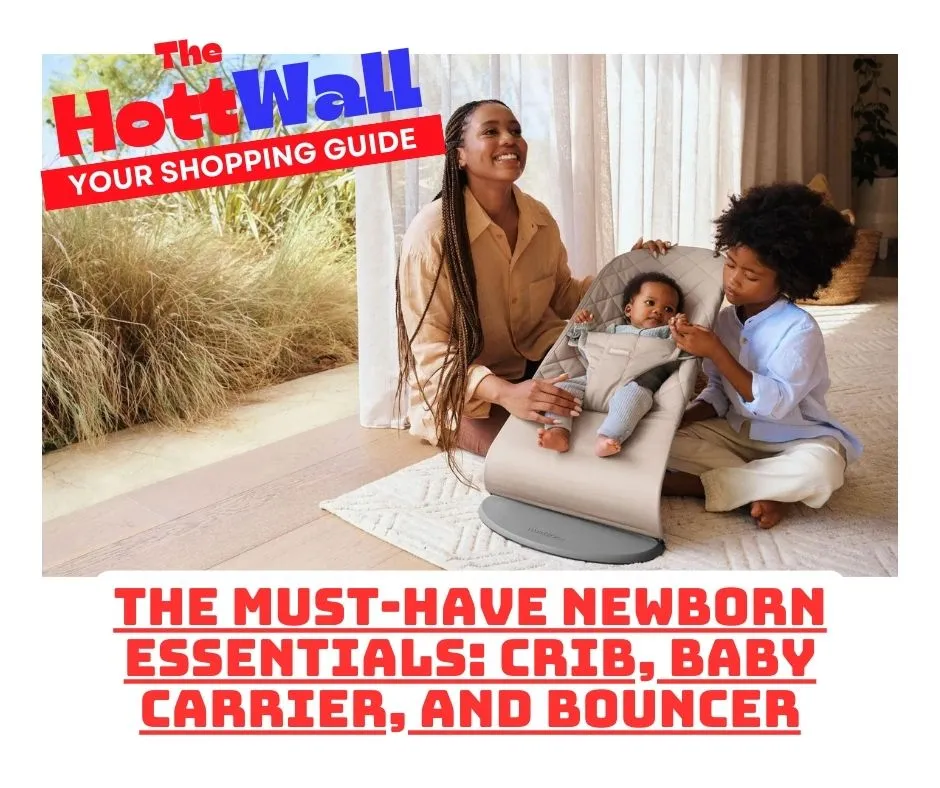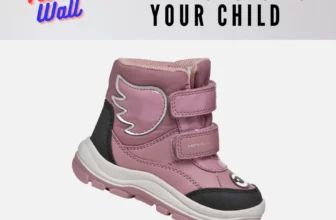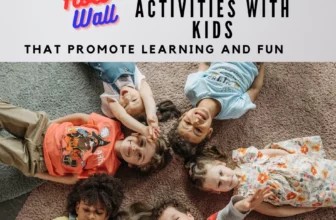
Welcoming a newborn into your family is one of life’s most joyous occasions, but it can also be overwhelming. One of the first tasks on every parent’s to-do list is preparing a newborn kit, often referred to as the baby layette. This kit typically includes essentials like clothing, diapers, and toiletries, but some of the most crucial items involve your baby’s comfort and safety: a crib, a baby carrier, and a bouncer. In this article, we’ll explore why these items are indispensable, what to look for when purchasing them, and how they contribute to your baby’s well-being.

Why the Newborn Kit is Essential
Preparing a newborn kit isn’t just about tradition; it’s about ensuring that your baby has everything they need for a safe and comfortable start in life. A well-prepared kit can ease the transition into parenthood, making those first few weeks and months more manageable. By carefully selecting each item, particularly the sleeping arrangements, baby carrier, and bouncer, you can create a nurturing environment that supports your baby’s growth and development.
Choosing the Right Sleeping Arrangement for Your Baby
The Importance of a Safe Sleep Environment
The baby’s sleeping area is one of the most significant investments you’ll make for your newborn. It’s where your baby will spend a substantial amount of time, especially in those early months. Therefore, it’s crucial to choose a safe and comfortable sleeping solution.
When selecting a sleeping arrangement, ensure it adheres to the latest safety regulations. Look for features like adjustable mattress heights to accommodate your baby as they grow. This feature prevents the baby from climbing out and ensures their safety while sleeping.
Types of Crib
There are several types of sleeping solutions available on the market, each with its own set of benefits:
- Standard: A full-size option that can be used from newborn through toddler years.
- Convertible: This type can be transformed into a toddler bed and sometimes even into a daybed or full-size bed, offering longevity and value.
- Mini: A smaller version of the standard model, ideal for compact spaces or as a secondary sleeping area.
- Portable: Designed for easy transport, these options are perfect for travel or moving around the house.



When choosing a sleeping arrangement, consider your living space, budget, and whether you plan on using it for future children. For a deeper dive into safety and best practices, check out our guide on sleeping solutions for newborns.
The Benefits of a Baby Carrier
Promoting Bonding and Convenience
A carrier is not just a practical tool for parents; it’s also a way to foster a deep bond with your baby. Carriers allow you to keep your baby close to your body, which can help soothe and calm them, especially in the early months. Additionally, using a carrier frees up your hands, making it easier to complete daily tasks while still attending to your baby’s needs.
Types of Baby Carriers
Baby carriers come in various styles, each catering to different needs and preferences:
- Wrap: Fabric wraps that can be tied in various ways to hold the baby securely. They are versatile and can be adjusted for different carrying positions.
- Ring: A long piece of fabric with rings that allow for quick adjustments. They are easy to use and excellent for newborns.
- Soft-Structured: These carriers have padded straps and waistbands, offering more support and comfort, especially as the baby grows.
- Backpack: Ideal for older babies and toddlers, these carriers are designed for outdoor activities and longer wear.



When choosing a carrier, consider factors like comfort, ease of use, and how long you plan to use it. For more insights on selecting the perfect carrier, you might find our article on choosing the best baby carrier helpful.
The Role of a Bouncer in Early Development
Providing a Safe Space for Rest and Play
A bouncer is a versatile piece of baby gear that can provide your little one with a safe and comfortable space to rest or play. Many bouncers are designed with gentle rocking or vibrating motions that can help soothe a fussy baby. They are lightweight and portable, allowing you to keep your baby close by while you go about your day.
Key Features to Look For
When shopping for a bouncer, consider the following features:
- Safety Harness: A secure safety harness is essential to keep your baby safe while they’re in the bouncer.
- Recline Options: Multiple recline positions allow you to adjust the bouncer for rest, play, or feeding.
- Portability: Look for a lightweight model that’s easy to move around your home or take on the go.
- Entertainment: Some bouncers come with attached toys or music, providing added entertainment for your baby.



Bouncers are also excellent for early sensory development, as many models include features like lights, sounds, and textures. To explore more on how bouncers contribute to your baby’s development, see our article on the benefits of baby bouncers.
Preparing for Your New Arrival
As you prepare for your baby’s arrival, the importance of choosing the right items for your newborn kit cannot be overstated. A safe and comfortable sleeping area, a supportive baby carrier, and a stimulating bouncer are all key components of a well-rounded kit. By investing in these essentials, you’re not only providing for your baby’s immediate needs but also laying the foundation for their growth and development.
Whether you’re a first-time parent or adding to your growing family, taking the time to research and select the best products will give you peace of mind and ensure your baby has everything they need from day one. Don’t forget to explore our other resources on newborn care essentials and parenting tips to help you navigate these exciting times with confidence.born care essentials and parenting tips to help you navigate these exciting times with confidence.
FAQ’s for Newborn Kit
What should be included in a newborn kit?
A newborn kit, or layette, typically includes essential clothing (onesies, socks, hats), diapers, wipes, a baby blanket, and toiletries like baby soap and lotion. Additionally, key items such as a crib, baby carrier, and bouncer are crucial for your baby’s comfort and safety. You might also consider adding a car seat, bottles, and pacifiers depending on your specific needs.
How do I choose the best crib for my baby?
When selecting a crib, prioritize safety by ensuring it meets the latest standards. Look for features like adjustable mattress heights, sturdy construction, and a secure safety rail. Decide between a standard crib, convertible crib, or mini crib based on your space, budget, and long-term plans. Always check for any recalls or safety warnings before purchasing.
Is a baby carrier safe for newborns?
Yes, baby carriers are safe for newborns when used correctly. It’s important to choose a carrier that provides proper head and neck support for your baby. Follow the manufacturer’s instructions for positioning your baby to ensure their airway remains clear. Soft-structured carriers, wraps, and slings are often recommended for newborns due to their supportive design.
How long can my baby use a bouncer?
Most bouncers are designed for use from birth until your baby can sit up unassisted, which is usually around 6 to 9 months. Always follow the manufacturer’s weight and age guidelines. Never leave your baby unattended in a bouncer, and discontinue use once they start trying to sit up or roll over, as this can make the bouncer unsafe.
Do I need both a crib and a bassinet?
While a crib is a long-term sleeping solution that can be used from birth through the toddler years, a bassinet is a smaller, more portable option often used in the first few months. Some parents prefer to use a bassinet for the convenience of keeping their newborn close during the night. Whether you need both depends on your personal preference, space, and budget.








